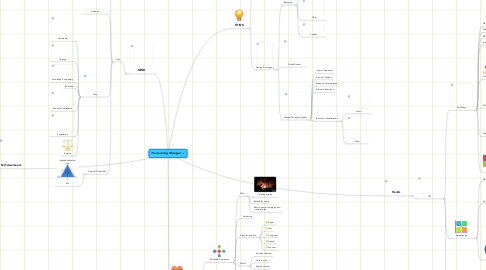
1. MIND
1.1. Intro
1.1.1. What is Learning Manager
1.1.1.1. Apply
1.1.1.2. Understand
1.1.2. Gateway
1.1.3. Why
1.1.3.1. Complexity
1.1.3.2. Change
1.1.3.3. Knowledge/Competency
1.1.3.4. Relational
1.1.3.5. Emotional Intellegence
1.1.3.6. Expectation
1.1.3.7. Balance
1.1.4. Personal Orientation
1.1.4.1. Me
2. Self-Awareness
2.1. Choice
2.1.1. Choice
2.2. Low Self-Awareness
2.2.1. Confusion
2.2.2. Self-Esteem
2.2.3. Dysfunctional & Stress
2.2.4. Desired vs achieved outcomes
2.3. What
2.3.1. How I make sense of the world
2.3.2. How others might see me
2.3.3. Strength & weaknesses
2.3.4. Emotional reactions
2.4. Aspects of Self
2.4.1. Living
2.4.2. Loving
2.4.3. Learning
2.4.4. Legacy
2.5. JOHARI Window
3. Heart
3.1. FEEL
3.1.1. Emotional Awareness
3.1.1.1. Why
3.1.1.1.1. Thinking species
3.1.1.1.2. Rationality needs
3.1.1.1.3. New evidence converging from multiple fields
3.1.1.2. Hardwiring
3.1.1.3. Need for emotion
3.1.1.3.1. Anger
3.1.1.3.2. Fear
3.1.1.3.3. Happiness
3.1.1.3.4. Disgust
3.1.1.3.5. Sadness
3.1.1.4. Where
3.1.1.4.1. Individual reaction
3.1.1.4.2. Social Norms
3.1.1.4.3. Specific context
3.1.1.4.4. Role
3.1.1.5. What
3.1.1.5.1. Personal master (internal)
3.1.1.5.2. Social competence (external)
3.1.1.6. Improve your emotional awareness
3.1.1.6.1. Develop (from zero)
3.1.1.6.2. Improve from existing
3.1.2. Values & Beliefs
3.1.2.1. Process of acquiring
3.1.2.1.1. Imposed Values
3.1.2.1.2. Clarified Values
3.1.2.1.3. Discarded Values
3.1.2.2. What
3.1.2.2.1. Operational
3.1.2.2.2. Moral
3.1.2.3. Value Change
3.1.2.3.1. Intense experience
3.1.2.3.2. Rationalization
4. THINK
4.1. Learning Style
4.1.1. Ned Herman
4.1.2. Hunny Munford
4.1.3. Continuous Learning
4.2. Framing/Assumption
4.2.1. Reframing
4.2.1.1. Purpose
4.2.1.2. Time
4.2.1.3. Context
4.2.2. Fixed Mindset
4.2.3. Sensory Perception Model
4.2.3.1. Inputs / Awareness
4.2.3.2. Frames / Analysis
4.2.3.3. Meaning / Interpretation
4.2.3.4. Evaluate/ Reactions
4.2.3.5. Behavior / Manifestation
4.2.3.5.1. Covert
4.2.3.5.2. Overt
5. Hands
5.1. DO
5.1.1. Facilitation
5.1.1.1. Why
5.1.1.2. Pitfalls
5.1.1.3. What
5.1.1.4. Important
5.1.1.5. Craftmanship
5.1.1.5.1. Group Skill
5.1.1.5.2. Individual Skill
5.1.1.6. 3 Facilitating Styles
5.1.1.6.1. Autonamous
5.1.1.6.2. Co-operative
5.1.1.6.3. Hierarchical
5.1.1.7. 6 Functions
5.1.1.7.1. Planning
5.1.1.7.2. Manage Process
5.1.1.7.3. Confronting
5.1.1.7.4. Feeling
5.1.1.7.5. Structuring
5.1.1.7.6. Valuing
5.1.1.8. Conflict Resolution
5.1.2. Assertiveness
5.1.2.1. What
5.1.2.1.1. Expressview/feelings
5.1.2.1.2. Respect
5.1.2.2. 5 principles
5.1.2.2.1. Be focus
5.1.2.2.2. Be persistent
5.1.2.2.3. Accept responsibility
5.1.2.2.4. Don't be apologetic
5.1.2.2.5. Ignore criticism
5.1.2.3. When
5.1.2.3.1. Aggressive
5.1.2.3.2. Assertive
5.1.2.3.3. Passive
5.1.3. Influencing
5.1.3.1. Styles
5.1.3.1.1. Push
5.1.3.1.2. Pull
5.1.3.2. 7 Techniques
5.1.3.2.1. Seed sowing
5.1.3.2.2. Courting
5.1.3.2.3. Salami(slicing)
5.1.3.2.4. Fait accompli
5.1.3.2.5. Own people
5.1.3.2.6. Delphi
5.1.3.2.7. Agent
